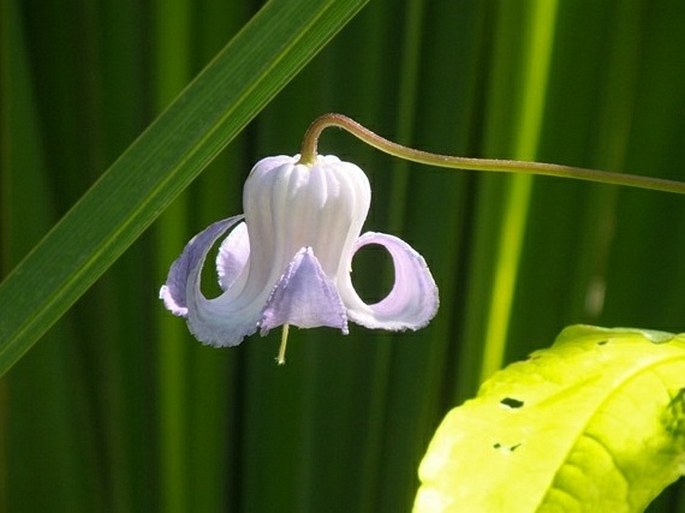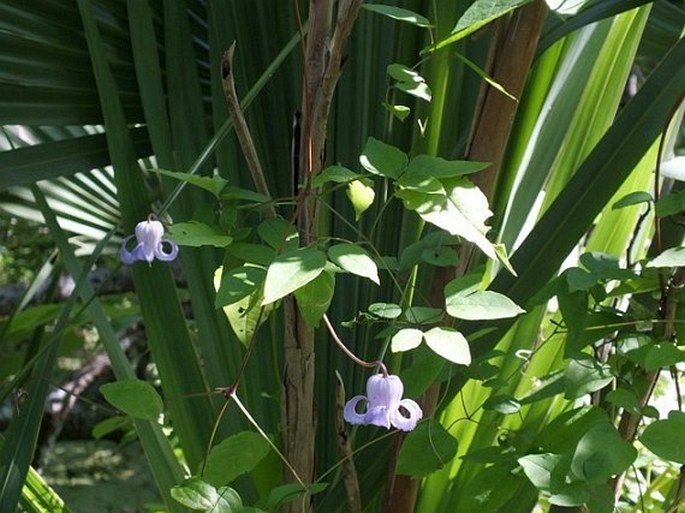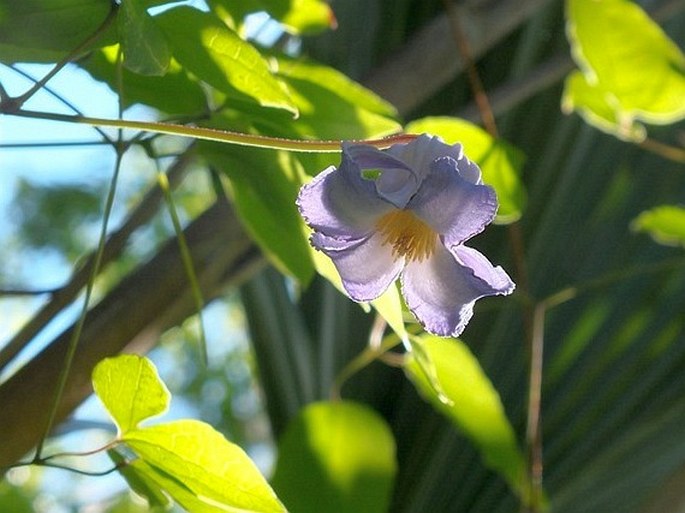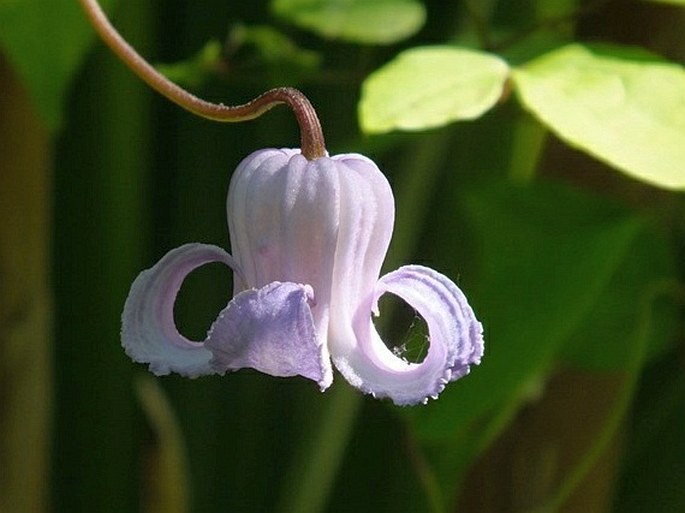Syn.: Coriflora crispa (L.) W. A. Weber, Viorna crispa (L.) Small, Viorna obliqua Small
Family: Ranunculaceae Juss.

Distribution: North America species found along Atlantic coast from southern part of Virginia to Florida and following the coastal states of Gulf of Mexico to eastern Texas and following mostly western side of Mississippi as far north as Missouri and Illinois.
Ecology: In shrubland, low lands, swamps. Low elevations, 0–200 m. Blooms from spring until summer.

Description: Perennial vine with stems up to 3 m long, somewhat hairy, more at nodes. Leaves opposite, 1–2-pinnate, rarely single or 3-pinnate; leaflets 4–10 with tendril-like leaflet, lanceolate to ovate, 3–10 × 0.5–4 cm, slightly reticulate. Leaflet width is very variable even on the same plant. Inflorescence terminal, single flower without bracts, bell-shaped, sepal tips strongly spreading to recurved, violet-blue, 2.5–5 cm, margins thick and crispate, 2–6 mm wide, tips acuminate. The recurved and crispate edges of sepals are a diagnostic feature for this plant. Fruit is an achene with a beak, 2–3.5 cm, closely hairy.
Threat and protection: The Marsh Clematis is listed as endangered in the states of Illinois and Kentucky.


These images were taken in USA, Louisiana, Jean Lafitte National Park (May 2014).


